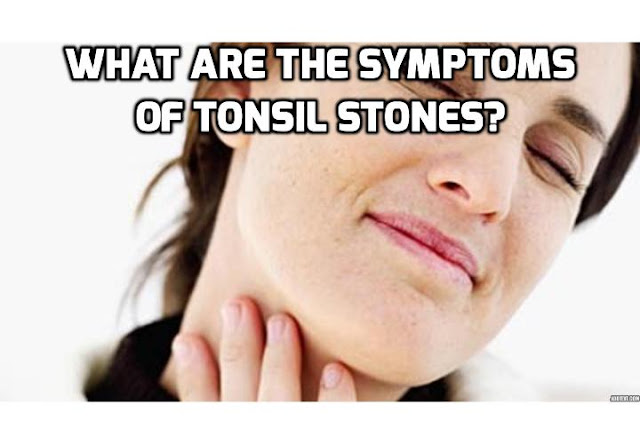 |
Individuals with tonsil stones experience the build-up of dead cells, food particles, saliva,
and microorganisms in the crevices of their tonsils.
Although tonsil stones themselves are not contagious, it is possible to transmit
bacteria or other infectious agents to another person and increase their
likelihood of developing tonsillar inflammation, which can lead to the
formation of tonsil stones.
If someone has tonsil stones that are easily dislodged, he or she has a higher chance of
transmitting oral bacteria to others via saliva.
Additionally, depending on the cause, inflammatory
conditions such as tonsillitis may also be contagious and may lead to tonsil-stone
formation.
Mononucleosis, for example, is a viral cause of
tonsillar inflammation that is highly contagious. Bacterial causes of
tonsillitis such as those responsible for strep throat are also very
contagious.
Tonsillitis that is caused by allergies or sinusitis, however, is rarely
transmittable to others.
Tonsil stones are not regarded as contagious, but the bacteria
from tonsil stones can be transmitted to another person through saliva. Actions
such as kissing or sharing eating utensils can make the sharing of oral
bacteria more likely.
However, although bacteria can be spread to others
by these actions, it is almost impossible to develop tonsil stones as a result of contracting microorganisms from another person.
The individual shape
of your tonsils and your oral-hygiene
habits are largely responsible for tonsil-stone
formation. Your tonsils
are two, oval-shaped lymphatic structures that are positioned on either side of
the back of your throat.
The tonsils
are covered by a surface of pink mucosa, which contains pits and channels that
are commonly known as the tonsillar crypts. When substances become trapped in
these crypts and begin to decay, pale tonsil stones can easily form.
Every person possesses a slightly different oral structure
that can predispose him or her to debris accumulation and tonsil stones. As a result, you do not need to be concerned about contracting tonsil stones by a quick kiss or by sharing food.
Furthermore, most bacteria and other microorganisms
are conveyed through direct contact with an infected medium such as saliva or
blood.
Ultimately, the only way that you can acquire
tonsillar bacteria is through direct contact. This is possible but unlikely, as
most people do not touch their tonsils.
Watch this Video – Tonsil Stones: Is Tonsil Stones Contagious?
This article is based
on the book, “Tonsil Stones Remedy Forever” by Alison White, an ex-sufferer of
tonsilloliths, also known as tonsil stones.
Tonsil Stones Remedy
Forever is a guidebook that teaches you everything you need to know to get rid
of painful, pesky and inconvenient tonsil stones without surgery.
This is a 7-day
schedule to get rid of tonsil stones using natural remedies that are tried,
tested and proven to work. If you are ready to take control of your health and
to make the right decision regarding your tonsil stones, then click on Tonsil Stones Remedy Forever.








